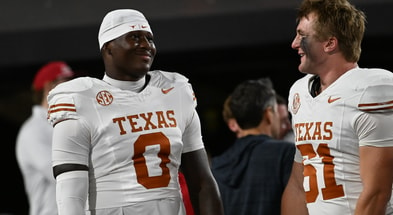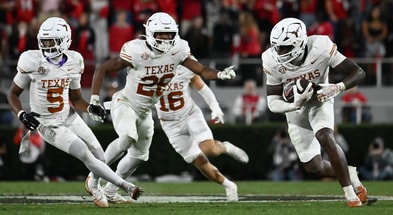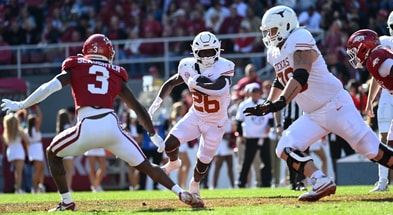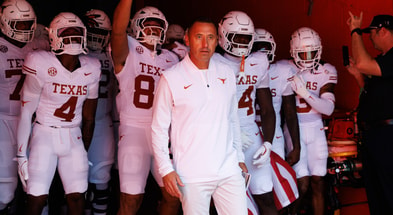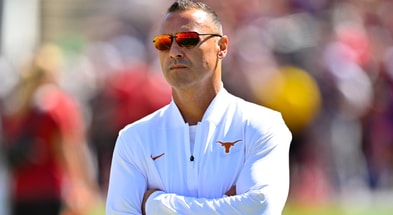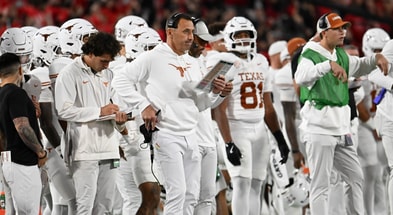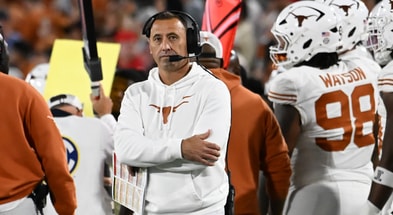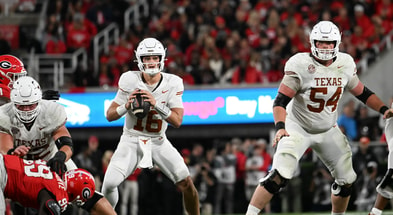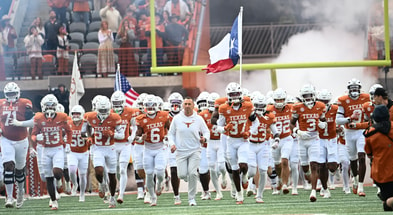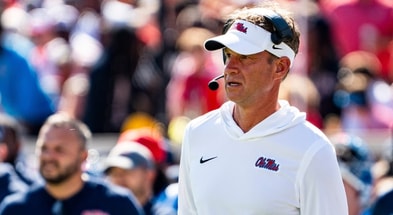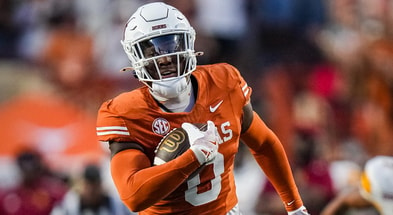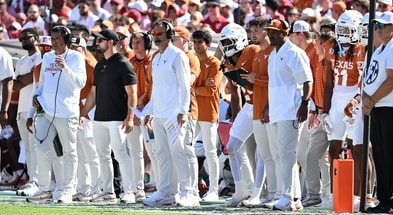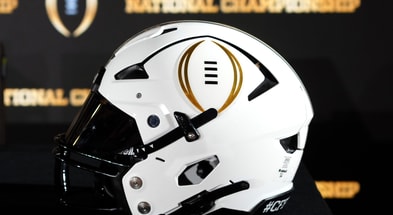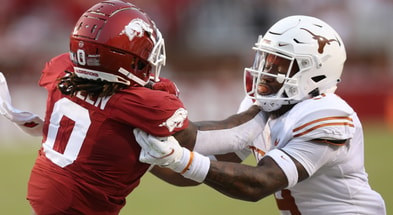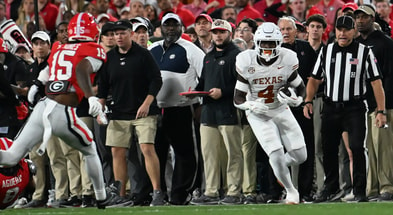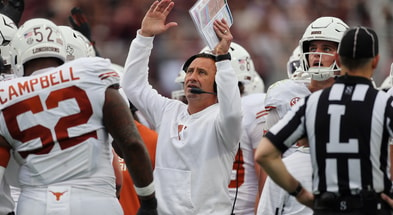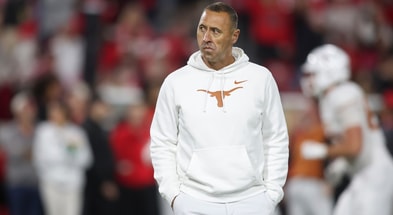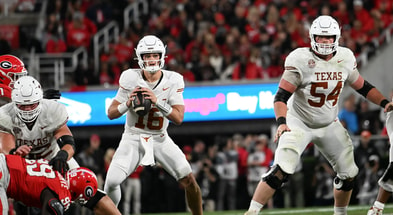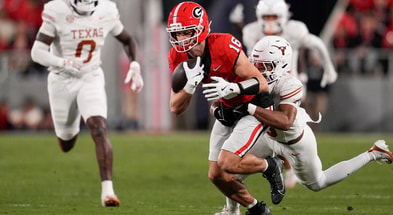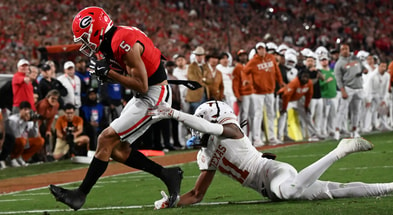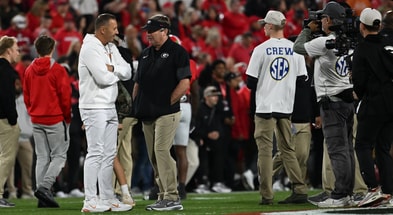Texas vs. Washington: Who holds the edge?

Washington and Texas have the two scariest offenses in this year’s college football playoff.
[Join Inside Texas and get ONE MONTH of Longhorn intel for just $1!]
Both teams feature brilliant offensive head coaches who excel at drawing up shot plays and can make hay if they have smart offensive lines, quarterbacks who have mastered their different designs, and NFL wide receivers to get open down the field. Both teams also have all of those dynamics.
Between Rome Odunze, Adonai Mitchell, and Xavier Worthy you probably have three of the top receivers who will be taken in the 2024 NFL Draft.
If either team had drawn Michigan or Alabama in the semi-final I’d probably have chosen these two to end up in the Final against each other. Not that Texas vs Alabama/Michigan or Washington vs. the same are easy matchups, but these two teams are just well built to win in the playoffs.
But they got each other, so now what?
The underlying issue for Washington
Here’s the main problem for Washington in this matchup.
They’re facing a team who can match them for offensive firepower (or at least come close) but they’re also facing a team that’s simply a lot more talented overall.
The Huskies are built from high 3-star and low 4-star players and most of the starters have been around in Seattle for four or five years now. Think of one of the really good, G5 basketball powers like Gonzaga or Villanova where they routinely have a bunch of fringe NBA players who stick with the program long enough to learn how to win college games and build dominant teams as juniors and seniors.
In fact, they’re actually very closely akin to another Pacific Northwest undefeated of the past…the Kellen Moore Boise State Broncos.
Michael Penix, Jr is even a good approximation of Kellen Moore. Both are left-handed, a bit short and limited in the pocket but terrific at retreating to create space before firing bombs down the field to burners running down the field. Kalen DeBoer is also a spiritual successor to the Chris Petersen style of “we run plays, not a system” offense.
What’s the challenge for teams like that? The difference between college football and college basketball is that the best, pro-caliber athletes aren’t one and done. They also stick for 3-4 years and learn how to win at the college level.
This is the central challenge confronting Washington in this game. They’re not accustomed to facing the level of athletes along the D-line who can big brother a scrappy line of veterans and they’re used to having the best skill athletes in space.
Which leads us to the Texas secondary and D-line.
The Longhorns have the oft-mentioned T’Vondre Sweat at 3-technique, another star at nose tackle in Byron Murphy, and more talent spelling them off the bench. In the secondary they’re less experienced but can match Washington’s top three receivers with the following defensive backs.
- Corner Malik Muhammad: A 96.22 rated recruit from DFW.
- Star (nickel) Jahdae Barron: An 88.73 rated recruit from CTX who will likely go in the 2nd round in 2024.
- Corner Terrance Brooks: A 95.90 rated recruit from DFW.
When he’s served his time for a ridiculous targeting penalty in the Big 12 title, Texas will also be able to play safety Derek Williams in coverage, a 95.52 rated recruit from Louisiana. They’re a bit young, Brooks is a sophomore while Williams and Muhammad are freshmen, but they have size and athleticism on a different level than what Washington normally faces from opposing secondaries.
The Huskies’ advantage in this game is a higher quotient of veterans. The Longhorns will be trusting some young players in multiple spots, although they too have some high IQ veterans in key spots. In terms of overall talent and skill, Texas is much deeper than any team Washington has drawn in the Kalen DeBoer era.
In particular, the combination of SEC-type D-tackles and elite athleticism at cornerback is the sort of challenge that leads to diminishing returns for most passing attacks. This isn’t like in 2019 or 2020 when LSU or Alabama brought high flying attacks into the playoffs only after getting tested in multiple SEC contests. It’ll be a new challenge for Washington and one they’ll have to adjust to live.
The other issue is the matchup against the Texas offense, which going against the Washington defense might look like the Washington offense.
So, are the Huskies doomed in this game going up against a more talented overall team? Or can they shoot their way out of it with a veteran quarterback and tremendous overall firepower?
The spread tempo gambit
There are two modern inventions the Huskies could employ to even out their chances in a game like this. The spread passing game and up-tempo offense.
The spread passing game is already their bread and butter and it’s the ultimate way to play offense. Why try and bash your heads up against the Longhorn defensive front when you can try and pick on them in space with elite ball-winning receivers coordinated to find open space by a topflight offensive staff?
Up-tempo offense is something the Huskies have only dabbled in this season because they’ve been so good on offense, DeBoer hasn’t wanted to risk it.
I’ll explain…
The trick of up-tempo offense is to wear out your opponent, create alignment errors, and turn big men like T’Vondre Sweat into liabilities by making them chase the ball and line back up again without the time they need to catch their breath. The bigger a player’s body, particularly the muscles, the more oxygen he’s using up to keep them going.
If you watch, say Oklahoma in the Alamo Bowl against Arizona, it was obvious the Sooners NEEDED tempo to help them get the Wildcats in alignment problems and wear them out so they could crease them on runs or RPOs. Without that advantage, it was hard to out-execute them with a rebuilt O-line and freshman quarterback.
The catch with using tempo is that you increase the number of possessions and chances the other team gets as well, so they get more shots at your defense. DeBoer and his offensive coordinator Ryan Grubb believe in their own ability to spend time getting the right play call in to execute and control the ball on offense. They don’t need tempo to do work for them in softening up the defense and they don’t want to leave their own defense out to dry.
A major reason the Huskies only gave up 23.6 points per game this season on defense is because they faced the 108th fewest offensive plays in the country. This was a very protected unit who often got to play with a lead and were never over exposed by their own offense.
If they were left on an island to defend 80+ snaps against the Texas offense (they faced an average of 73) they might turn into a pumpkin at the wrong time and be unable to get stops down the stretch with the game on the line.
For that reason, I expect we won’t see Washington employ tempo strategies save for as a change-up, part of an early script to get a lead, or out of necessity if they get in a hole.
Spread formations and passing though, that’s where this game gets interesting. No defense does great when you isolate their worst defenders in space against good receivers and Texas is no different.
When the Huskies get into four-wide sets, either 2×2 or 3×1, with running back Dillon Johnson helping protect inside, it creates real problems for opposing defenses. Last year Texas played them two-high most of the game and took their chances with a light box and the Huskies ran for over 100 yards.
Top 10
- 1New
Beau Pribula injury
Mizzou QB's status vs. OU emerges
- 2
Sarkisian rumors
Texas HC makes strong claim
- 3
Sam Leavitt future
Dillingham opens up
- 4
Ryan Wingo
Status on Horns WR vs. Arkansas
- 5Hot
Strength of Schedule
Ranking CFP Top 25
Get the Daily On3 Newsletter in your inbox every morning
By clicking "Subscribe to Newsletter", I agree to On3's Privacy Notice, Terms, and use of my personal information described therein.
This year the Texas defensive front is considerably better so they’ll still probably play two-high and stay off, but there’s still the problem of who covers #4?
If the outside receivers are the top two threats, handled by cornerbacks, and the slot receiver to the field is the 3rd most dangerous player and is checked by the nickel, then you still have the 4th most dangerous guy who might be #3 from the field sideline or the #2 in the boundary.
Who covers him? Generally a safety or a linebacker, who are weaker coverage players than the cornerbacks or nickel. Well what if the guy in that #4 spot is actually really good, perhaps even their best receiver?
In the case of Washington, what if it’s their amazing slot receiver Jalen McMillan (H), and you’re already worried about getting safety help over Odunze (Z)?
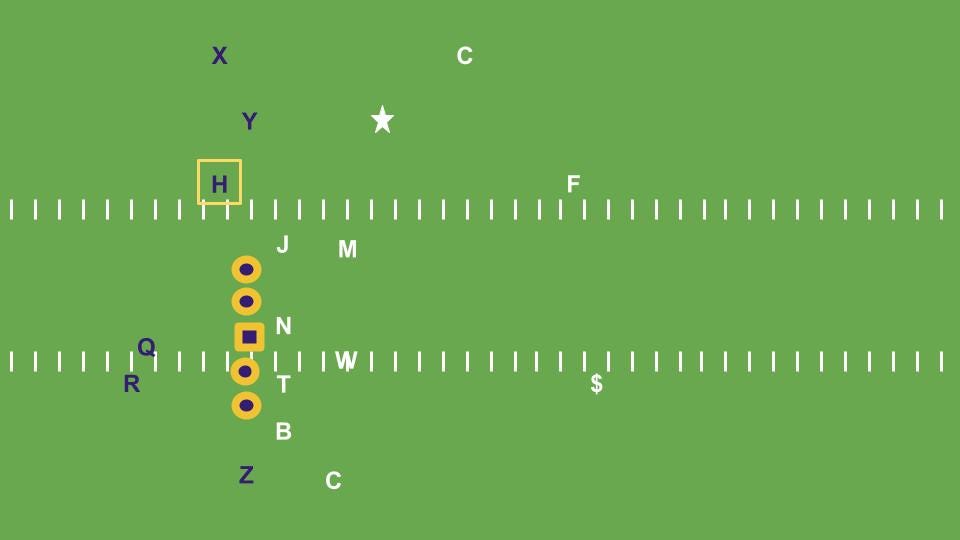
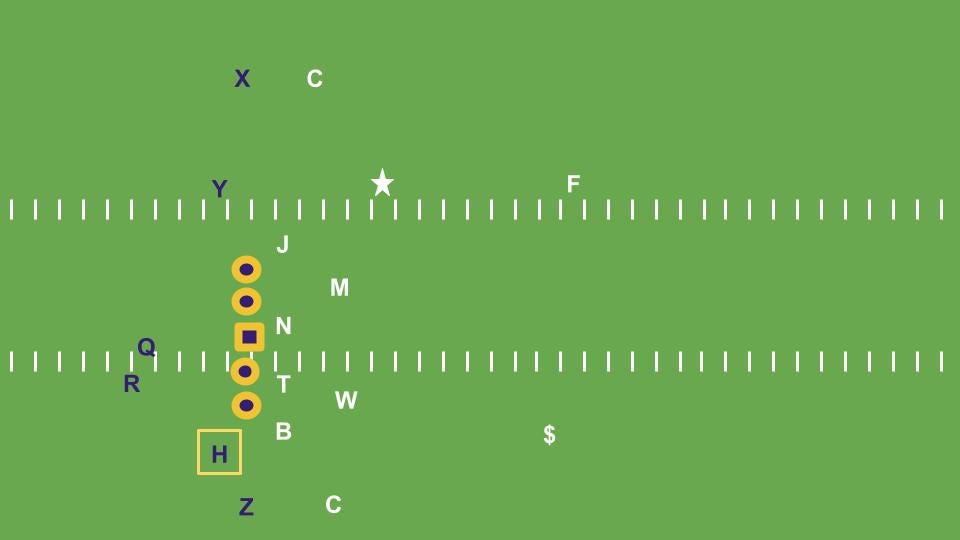
In either example, the best you can do from two high coverage is to keep a safety over the top (perhaps they slide the linebacker further out also to wall off the H receiver’s path to the safety).
Washington’s hopes in this game probably revolve around using these sorts of formations, along with endless other clever variations and actions, to hunt matchups and allow them to approach this game the way they prefer.
The way they prefer is by scoring some early points with the opening script (perhaps with tempo) and then controlling the ball with steady gains, throwing underneath and running the ball, so the defense only has to execute some unique wrinkles or otherwise hold up against Sarkisian on a limited number of snaps.
In an ideal world, Washington would get into the 4th quarter without having to use a lot of tempo to mitigate the challenge of the Texas D-line and could then step on the gas as needed to score whatever points they need late to ensure they have at least one more point than the Longhorns.
Nuclear-armed Texas
The scariest component of this game for the Huskies isn’t T’Vondre Sweat or the talented Texas defense. It’s stopping the Longhorn offense with their own defensive unit.
Texas is coming into this game much healthier than they’ve been in a while and while the Huskies welcomed back star slot receiver Jalen McMillan for the Pac-12 Championship, Texas got a healthier Ja’Tavion Sanders rolling at tight end in the Big 12 title.
The Husky tight ends are also good, but Sanders is a high-round NFL prospect who brings another level of firepower to the Texas offense when he’s healthy. He had two different five-catch, 100+ yard performances early in the season (Alabama, Baylor) before hurting his ankle and going pretty quiet until the Oklahoma State game when he exploded.
The Horns have also been replacing injured running back Jonathon Brooks by incorporating back-ups Keilan Robinson and Jaydon Blue more with freshman Cedric Baxter as the main back. Robinson and Blue are both blazing fast guys who can get behind a defense in a hurry or be a nightmare in the flats.
Texas has tons of weapons to move around and load up for Sark and they’ve had a month to grow and expand the arsenal of shot plays to include them in. They needn’t have any compunctions about playing in an up-tempo game if they feel it would help them. The Longhorns have more depth, particularly along the D-line, which is where tempo really takes it out of a team.
Sark tends to be fairly calculated overall, just like DeBoer, but Texas could get very aggressive in this game if they wanted. The goal of a winning gameplan is to ensure a game where your best players are positioned to make the game-winning plays when it matters. If you don’t feel you can shut the Huskies down, and no one should really feel like they can shut that offense down, then you can play a game where the outcome hinges on the Husky defense holding up and finding multiple stops.
There’s another important dynamic to this one.
This matchup turned a year ago in the Alamo Bowl on a play that was and a play that wasn’t. The Huskies had a 40-yard touchdown run where they caught the Longhorns with back-ups subbed in up front and they blew open a hole for their back. Later, they thwarted a potential Texas comeback after the Longhorns dialed up an open shot over the middle to Xavier Worthy that was dropped (he had a broken hand).
Penix only averaged 5.3 ypa but that explosive run and the Huskies going 11-20 on 3rd down and 2-3 on 4th down were indicative of a consistent, chain-moving offense which was enough to win 27-20. If the Longhorns spend this game in two-high coverage, forcing the Huskies to earn their points the hard way while firing away with all of their numerous offensive weapons early and often on well scripted designs, can Washington keep up again?
I don’t think so, I think the Huskies will basically meet a more talented (if less experienced) version of themselves and be out-gunned. Should be an entertaining battle though, don’t expect either of these offensive units to go quietly into the night however this thing starts.
One other thing…Mike Gundy was eager to tell media before the Big 12 Championship Game that arguably the most terrifying component of the Longhorns is their special teams play. Xavier Worthy doubles as a terrifying punt returner and the Longhorns specialists and coverage teams all make great use of the roster’s depth of talent. Call that the tiebreaker if you will.
This article was originally published at America’s War Game.
